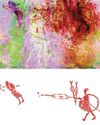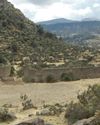
“In the west almost all Spain had been subjugated, except that part which adjoins the cliffs where the Pyrenees end and is washed by the nearer waters of the Ocean. Here two powerful nations, the Cantabrians and the Asturians lived in freedom from the rule of Rome.”—Second-century a.d. Roman historian Florus, Epitome of Roman History
By the final decades of the first-century b.c., Rome had grown from a small city-state on the Italian Peninsula into a vast empire whose territories completely encompassed the shores of the Mediterranean Sea. Its possessions extended inland as well, as much of Western Europe had succumbed to the relentlessly advancing Roman armies. Yet one small region remained impervious to Roman rule. This was a narrow swath of mountainous terrain wedged between the Northern Meseta and the Bay of Biscay, home to two Celtic tribes: the Cantabrians and the Asturians.
Rome began its conquest of Iberia in 218 b.c., but by the time Augustus (r. 27 b.c.–a.d. 14) became emperor nearly two centuries later, this geographical pocket alone remained unconquered. In matters of war, the Romans did not suffer failure lightly, and in 26 b.c., they finally launched what would prove to be a decisive campaign to annex the territory. As part of a violent 10-year conflict now called the Cantabrian Wars, Roman legions camped in front of the walls of a site known today as Monte Bernorio. Situated along the southern border of the Cantabrians’ territory, this indigenous stronghold was vital to the continued independence of this notoriously bellicose people, as it safeguarded the roads and the mountain passes that led into their heartland. In the end, it would fall, and, so in turn would the rest of free Iberia.
This story is from the September/October 2020 edition of Archaeology.
Start your 7-day Magzter GOLD free trial to access thousands of curated premium stories, and 8,500+ magazines and newspapers.
Already a subscriber ? Sign In
This story is from the September/October 2020 edition of Archaeology.
Start your 7-day Magzter GOLD free trial to access thousands of curated premium stories, and 8,500+ magazines and newspapers.
Already a subscriber? Sign In

A Very Close Encounter
New research has shown that human figures painted in red on a rock art panel in central Montana depict individuals engaged in a life-or-death encounter during an especially fraught historical moment.

A Sword for the Ages
A zigzag pattern, now tinged with the green-blue patina of oxidized metal, adorns the octagonal hilt of a rare sword dating to the Middle Bronze Age in Germany (1600-1200 B.C.) that was recently excavated in the Bavarian town of Nördlingen.

Ancient Egyptian Astrology
For centuries, layers of soot have coated the ceilings and columns in the entrance hall of Egypt's Temple of Esna. Now, an Egyptian-German team of researchers, led by Hisham El-Leithy of the Egyptian Ministry of Tourism and Antiquities and Christian Leitz of the University of Tübingen, is restoring the temple's vibrant painted reliefs to their original brilliance.

BRONZE AGE POWER PLAYERS
How Hittite kings forged diplomatic ties with a shadowy Greek city-state

RITES OF REBELLION
Archaeologists unearth evidence of a 500-year-old resistance movement high in the Andes

Secrets of Egypt's Golden Boy
CT scans offer researchers a virtual look deep inside a mummy's coffin

When Lions Were King
Across the ancient world, people adopted the big cats as sacred symbols of power and protection

UKRAINE'S LOST CAPITAL
In 1708, Peter the Great destroyed Baturyn, a bastion of Cossack independence and culture

LAPAKAHI VILLAGE, HAWAII
Standing beside a cove on the northwest coast of the island of Hawaii, the fishing village of Lapakahi, which is surrounded by black lava stone walls, was once home to generations of fishers and farmers known throughout the archipelago for their mastery of la'au lapa'au, or the practice of traditional Hawaiian medicine. \"

A MORE COMFORTABLE RIDE
Although the date is much debated, most scholars believe people 5,000 years ago. For thousands of years after that, they did so without saddles. \"In comparison with horse riding, the development of saddles began relatively late, when riders began to care more about comfort and safety in addition to the horse's health,\" says University of Zurich archaeologist Patrick Wertmann.